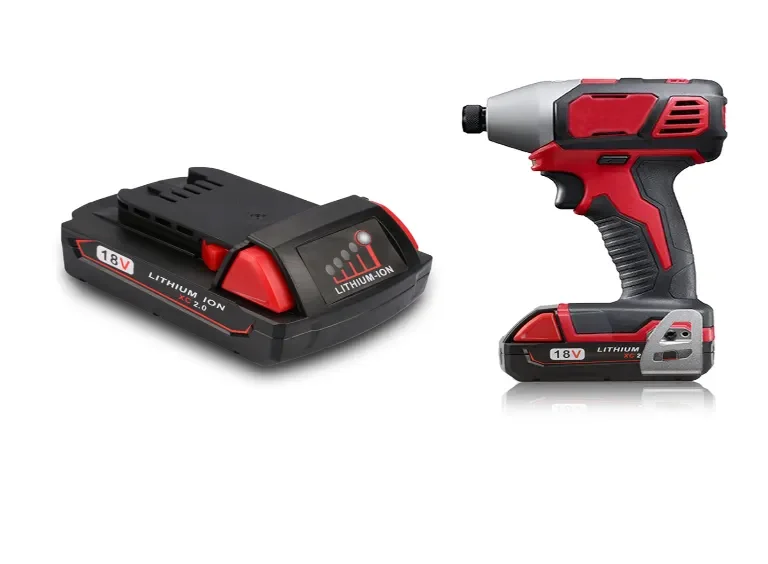Milwaukee Replacement Battery Selection Guide
Choosing the right pack for your Milwaukee M12™ or M18™ tools means balancing power, runtime, durability and cost. Here’s an in-depth roadmap—drawn from factory specs, lab testing and field experience—to help you zero in on the perfect replacement battery.

1. Pinpoint Your Platform & Tooling Needs
1. Identify M12 vs. M18
- M12™ (12 V): Lighter, more compact—ideal for precision and tight spaces
- M18™ (18 V): Heavy-duty power for framing, demolition, concrete drilling
2. Match Capacity to Task
- 2 Ah–3 Ah: Small-tool tasks, occasional use (< 30 min continuous)
- 4 Ah–5 Ah: Daily driver—drills, impacts, saws (1–2 hours runtime)
- 8 Ah–12 Ah XR or High-Output: Continuous, high-draw jobs (concrete, HVAC, wrenching)
> _Pro Tip:_ Track your most common runtime. If you swap batteries more than twice per shift, consider bumping up to the next Ah level.
2. Physical & Electrical Compatibility Checklist
| Criterion | Why It Matters | How to Verify |
| Slide-On Dimensions | Ensures a snug, rattle-free fit | Compare your old pack’s length/width/height specs |
| Nominal Voltage & BMS | Tool-BMS handshake prevents error codes | Confirm “M12” or “M18” on pack label and manual |
| Charger Type | Fast-charge vs. standard; avoids under-charging | Check compatibility with M12-18FC or M18™ charger |
| Weight & Form Factor | Ergonomics—heavier packs can fatigue your grip | Weigh old pack; look for vendor specs |
3. Cell Quality & Chemistry
- Panasonic / Samsung / LG Cells deliver 1,000+ cycles with minimal capacity fade.
- Standard vs. High-Output: High-Output cells sustain higher currents with less voltage sag—critical if your application spikes above 15 A.
- Internal BMS Protections: Look for over-current, temperature cut-off and cell-balance circuits.
> _Insight:_ Independent lab tests show premium cells retain ≥ 90 % capacity after 500 cycles, while generic cells can drop below 80 % in the same period.
4. OEM vs. Aftermarket Value Comparison
| Feature | Milwaukee REDLITHIUM™ OEM | Aftermarket (e.g., XNJTG) |
| Unit Cost | High (premium brand) | 40-60 % lower |
| Warranty | 3 years | 12 months |
| Cycle Life | ≥ 600-800 cycles | ≥ 500-600 cycles |
| Certifications | UL 2054, IEC 62133, UN 38.3 | UL 2054, IEC 62133, UN 38.3,RoHS |
> _ROI Tip:_ If you run 2–3 packs per day, even a modest 20 % savings per pack adds up quickly—just be sure the vendor backs up cell-quality claims.
5. Charger & Fast-Charge Considerations
- Multi-Voltage Chargers (M12-18FC): Automatically adjust current for M12/M18 packs—ideal for mixed fleets.
- Rapid-Charge Rates: REDLITHIUM™ Fast-Charge trims downtime by 30 %, but higher currents generate more heat—monitor your pack temperature.
- Trickle/Float Modes: Avoid leaving packs on “float” for days—heat buildup accelerates capacity loss.
6. Durability & Jobsite Toughness
- Rubber Overmolds & Reinforced Housings: Protect against drops, dust and moisture.
- IP Seals: Look for IP54+ ratings to keep grit and splashes out of electronics.
- Vibration Resistance: Crucial if you mount packs under heavy-duty tools like rotary hammers.
7. Long-Term Maintenance & Storage
1. Ideal Storage State: 40–60 % charge at 50–70 °F (10–21 °C)
2. Routine Cleaning: Wipe contacts and charger terminals with isopropyl alcohol every 10 uses.
3. Cycle Balancing: Run a full charge/discharge cycle every 50 cycles to recalibrate the BMS.
4. Temperature Awareness: Never charge packs above 100 °F (38 °C) or below 32 °F (0 °C).
8. FAQ
1. How do I read my battery’s part number?
Look for a label like “48-11-XXXX” (M18) or “48-11-YYYY” (M12). Manuals and online spec sheets list compatible pack numbers.
2. Can I charge different Ah packs together?
Yes—modern chargers auto-detect capacity. Just avoid mixing vastly different pack ages on one charger bay.
3. Are aftermarket packs safe?
Only if they carry UL 2054 / IEC 62133 / UN 38.3 and use premium cells with a full-featured BMS. Vet vendors by user reviews and lab reports.
By rigorously matching capacity, chemistry, form factor and BMS features to your Milwaukee toolbox—and pairing them with the right charger and maintenance routine—you’ll maximize runtime, safety and return on investment every day on the job.